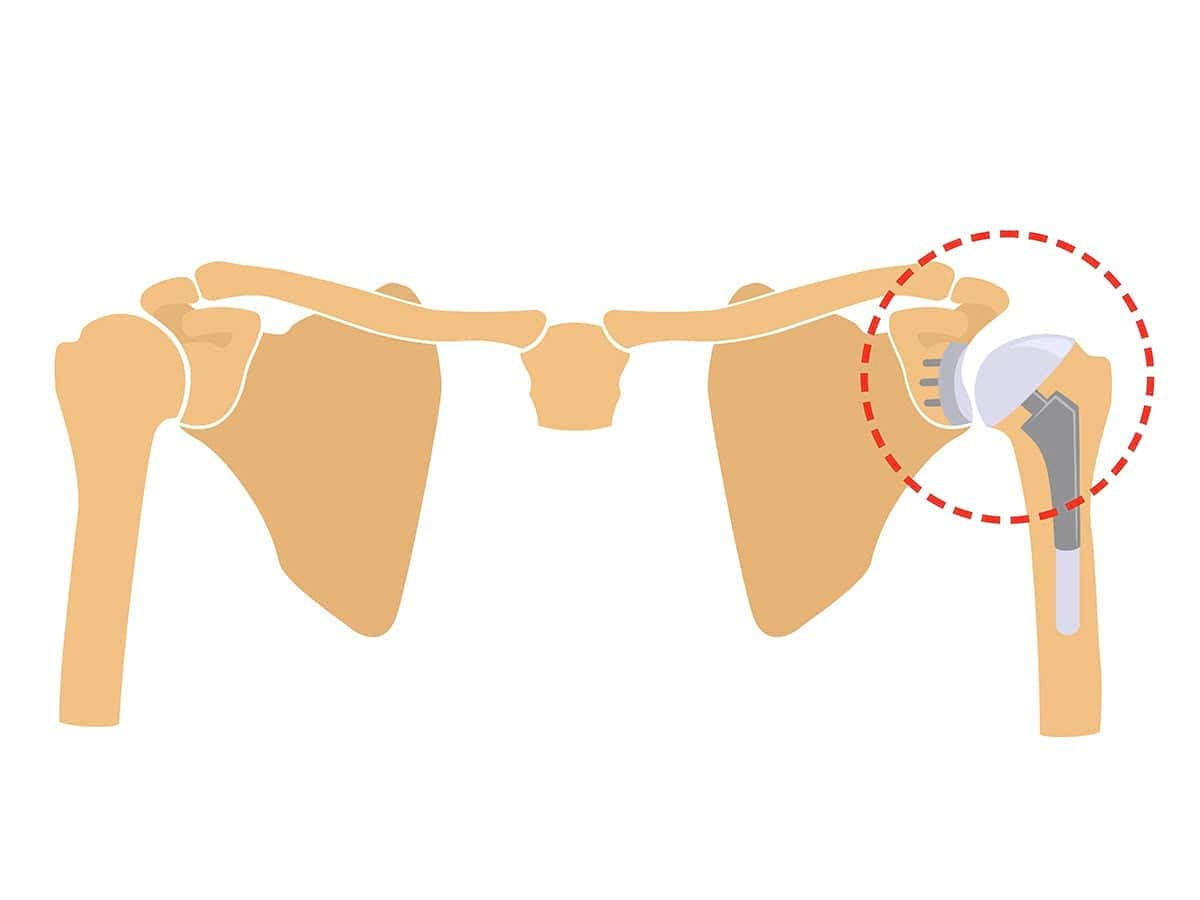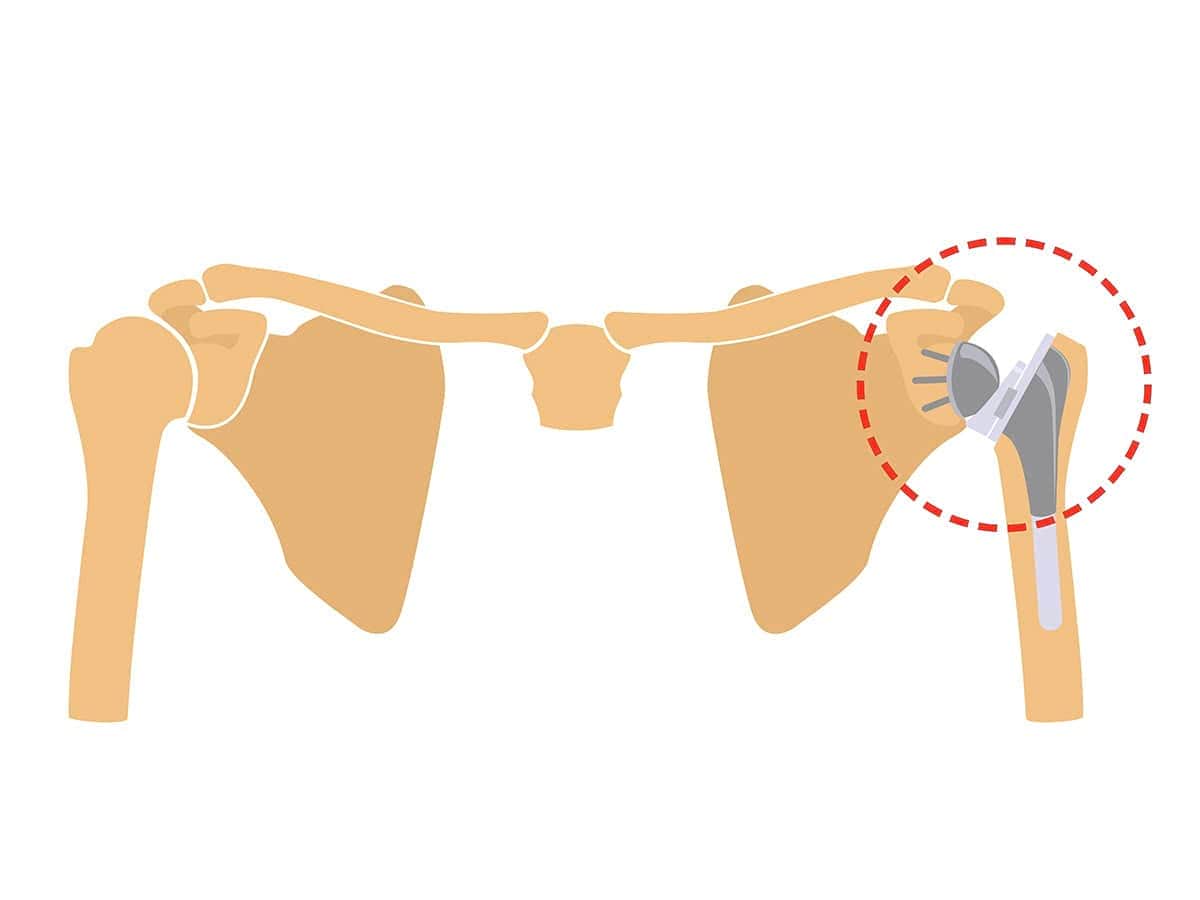Introduction
Reverse shoulder replacement is an alternative to the conventional total shoulder replacement procedure.
The conventional procedure is also referred to as the 'anatomic' approach (sometimes shortened to 'aTSA' for 'anatomic total shoulder arthroplasty), so called because the replacement components directly replace the existing ball and socket joint.

A reverse shoulder replacement on the other hand (abbreviated to 'rTSA' for 'reverse total shoulder arthroplasty') replaces the natural ball of the joint at the top of the humerus (upper arm bone) with a prosthetic socket and the natural glenoid socket is replaced with a prosthetic ball joint.

The reverse procedure may be more suitable for patients who have developed either several tears or one large tear in the rotator cuff (see rotator cuff tears), or who have developed a form of arthritis affecting the rotator cuff called 'cuff tear arthropathy' (see shoulder arthritis). This is because, whereas the anatomical approach continues to use the same muscle tendons for the same arm and shoulder movements, the reverse shoulder replacement changes the biomechanics of the joint and different muscles (including for example the deltoid muscle) are used to make arm and shoulder movements.
Other issues which indicate a reverse procedure may result in a better outcome than the anatomical procedure include:
- Previous shoulder replacement not effective.
- Complex fracture.
- Shoulder fracture in an older patient.
- Repeated dislocation.
- Problems lifting arm over head or away from side (and accompanying pain).
Preoperative Instructions
- Existing medication(s) – some medications can impact surgery, especially any anti-coagulant medication and medicine for diabetes; we will advise if any of your medication needs to be stopped (and when) well ahead of the day of surgery. Any other medication should be taken the morning of surgery with a little water (half a cup maximum).
- You should not shave (or wax) skin near where any surgical incisions will be made.
- No solid foods (cow's milk and drinks containing cow's milk are considered food) should be consumed within 6 hours of surgery; clear fluids (e.g.: water, cordial) may be consumed until 3 hours before surgery and then nil by mouth from that point.
- Please advise us if you have a cold or fever, a cough or any other injuries or infections (e.g.: urinary tract infection or cuts / tears to the skin) – your procedure may need to be postponed as any of these may make anaesthesia or surgery unsafe.
- Please bring all imaging (e.g.: x-rays / CT scans / MRI scans) with you to hospital.
- Please come to hospital at least one hour before your planned surgery, unless we advise you otherwise.
In very general terms make sure you follow a healthy and balanced diet before surgery and continue any regular physical activity up until the day of the procedure. If you smoke, you should ideally stop smoking at least four weeks before the procedure and otherwise as a minimum at least one week before.
Procedure
A reverse shoulder replacement procedure is carried out under general anaesthetic and normally takes around two hours to complete. A hospital stay of 1-3 days after surgery is generally necessary.
During the procedure itself Dr Moopanar accesses the shoulder joint via an incision to the front of the shoulder. The ball at the upper end of the humerus bone (called the 'head' of the humerus) is removed and the socket in the scapula (the 'glenoid') is also removed. A new prosthetic head (ball component) is fixed into the glenoid socket and a new prosthetic socket is fitted to the top of the humerus. The replacement head is generally a metal component, while a replacement socket is often made of plastic. Once this is complete, the incision is closed with absorbable sutures.
Postoperative Instructions
Once you have undergone a reverse shoulder replacement, the aim is to have the new shoulder fully functional as soon as possible and this is best achieved by a physical therapy schedule over the three-month period after surgery and avoiding any activities that will put the new joint under too much stress.
There will be some pain after the procedure and this can be kept in check with regular pain medication. You will also be given a sling for the arm which should be worn at all times in the first 4 weeks, and only removed for showering and exercising.
During the first 2 weeks you should apply ice packs to the shoulder five times a day (for 10min each time) to help with the swelling.
You will be given a physical therapy program which will gradually increase over the initial 4 weeks. Strength exercises generally commence after 12 weeks. The strength and range of motion of the joint should progressively improve over the 3-6 months after surgery by following the physical therapy program.
At the 4-week mark most patients can resume normal day-to-day activities (but not lifting heavy weights or making any push-pull movements) and at the 6-8 week mark you will probably be able to start driving again as long as your Dr Moopanar has confirmed good range of movement and lack of pain.
More details on the rehabilitation program will be given to you after surgery.
Risks
As with any surgery, there is always a risk of:
- Pain.
- Bleeding.
- Scarring.
- Infection (of the incision site, or in the chest).
- Blood clot (leg or lung).
- Stroke.
- Heart attack.
Some specific risks of a reverse shoulder replacement are:
- Nerve damage around the shoulder.
- Rotator cuff tears.
- Stiff / frozen shoulder.
- Loosening / dislocation of the shoulder replacement components.
- Wearing out of components over time.

